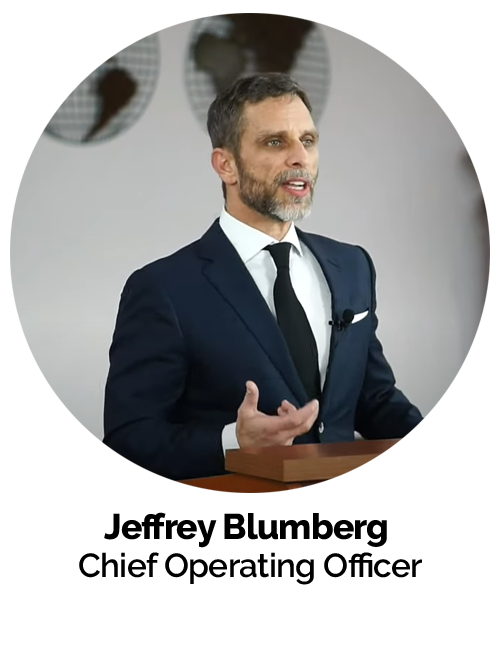Last updated on November 27th, 2025 at 03:45 pm
Last updated on November 17th, 2025 at 04:03 pm
 Let’s face it, the buzz around Dental Service Organizations (DSOs) has been hard to miss lately. These entities are causing quite a stir in the dental world, and it’s time we unpack what’s really going on.
Let’s face it, the buzz around Dental Service Organizations (DSOs) has been hard to miss lately. These entities are causing quite a stir in the dental world, and it’s time we unpack what’s really going on.
Whether you’re a seasoned dentist, a fresh dental school graduate, or simply curious about the industry, chances are DSOs have crossed your path in one way or another.
And just to be clear, when I say “DSOs,” I’m not referring to smaller doctor-led group practices. I’m talking about the bigger corporate endeavors with private equity backing.
At MGE, we’re all about staying ahead in the dental game, and that means keeping a close eye on DSOs. We’ve been crunching numbers and comparing notes, and despite the chatter about DSOs taking over, we’re starting to wonder if some of these DSOs might be sailing into choppy waters real soon.
 And by “choppy waters,” I mean they could be facing some serious growth and economic challenges that could impact the DSO landscape. That’s what this blog is all about—why certain DSOs might be in for a rude awakening.
And by “choppy waters,” I mean they could be facing some serious growth and economic challenges that could impact the DSO landscape. That’s what this blog is all about—why certain DSOs might be in for a rude awakening.
We’ll reveal four key reasons why certain DSOs might face challenges ahead. We’ll also discuss how these changes could impact individual dentists like you and provide actionable steps to thrive amidst the shifts.
DSOs: A Rocky Road Ahead
When I say DSOs may be headed for tough times, we’re not overgeneralizing. There’s been a massive surge in DSO activity over the last few years, and it’s got us raising our eyebrows.
I’m no financial guru—just sharing what we see in the industry. You should make your own call and find what works best for you. But from where we stand, it’s something we see coming.
Now, I’m not saying that DSOs are all going to fold tomorrow. In fact, we might be calling this a little early, but we like staying ahead of the curve. Last year, we talked about recession-proofing practices, and it wasn’t the hottest topic back then. But guess what? The buzz about a potential recession is starting to grow louder.
Related reading: Checklist to “Recession-proof” Your Dental Practice
Back in the day, around 2005-2006, DSOs were just dipping their toes in the waters—nothing too aggressive. A few clients sold their practices, but it wasn’t causing major waves. Their growth model seemed sustainable enough.
Fast forward to the last five or six years and things have changed in a big way! The DSO scene exploded with companies jumping in left and right. But what sparked this frenzy? You guessed it—big money came to the party.
Private equity, hedge funds…they all hopped on the DSO train. One of our clients attended a conference a little while back and was surprised to find it filled with private equity and hedge fund representatives champing at the bit to get into the DSO game.
As a result, jaw-dropping offers started being thrown at dental practice owners, unlike anything we’ve seen before. The comparisons to what was happening 15 years ago? Well, let’s just say it’s not even close!
DSOs that have been around for decades may not get hit so hard by this. They know how things work. But new players in the game that are writing huge checks and hoping to scale up quickly? They may need to brace themselves for a rough ride ahead.
Before we dive into what you can do about it, let’s explore the four reasons behind our concern for certain DSOs. It’s time to unravel the mystery behind the rocky road ahead!
DSOs in Deep Waters: Reason #1—Money Is No Longer Cheap
First up, we’re talking about the cold, hard cash…or should I say, the not-so-cheap cash!
You see, back in the day, interest rates were all sweetness and light, floating around 2%. Borrowing $100,000 at that rate meant you wouldn’t be breaking the bank to pay it back. But fast forward to now, and those rates have climbed like nobody’s business!
With the Federal Reserve raising the current rate to 5.25%, banks are facing steeper interest payments. And guess what? Those banks that lend money to DSOs and other firms have to charge more too, or they’d be out of the money-making game.
It’s like a domino effect—banks tighten their lending standards, and the cost of money for DSOs starts getting pricier. Add to that recent bank failures, and everyone’s got their eyes peeled for inefficiencies. It’s like hiking with a cautious eye on someone who just stepped into a mud puddle—you don’t want to repeat their slip-up.
Oh, and speaking of numbers, the Federal Reserve’s Senior Loan Officer Opinion Survey (SLOOS) spills the tea on how banks are feeling about lending money. And let me tell you, 46% of domestic banks are tightening their lending standards for medium to large-sized firms—yikes!
And it doesn’t stop there—credit card lending is taking a hit too, with 30% of banks tightening their standards. Patients might feel the pinch, and that means you’ve got to step up your selling game.
Now, let’s get to the juicy part—we’ve seen some DSO deals fall through because of funding issues. It’s like the cracks in the dam are starting to show and we’re wondering if this is just the beginning.
Reason #2: The Perfect Storm of Inflation, Managed Care, and Slim Margins
Inflation has been playing hardball, hitting 17% since March 2020. Ouch! And when you combine that with PPOs writing off 40% to 50% of services, it’s not a pretty picture for DSOs trying to keep their heads above water.
Even with the advantage of economies of scale, those PPO fees can be a tough nut to crack. You can contact that PPO and negotiate a better fee, but you’re not going to hit 100%. Negotiating better deals can only get you so far, and at the end of the day, the bills need to be paid.
Struggling with PPO fees? Get insights into your fee structures with the MGE Fees and Plans Analysis tool. Elevate your financial approach and make informed choices. Discover your potential today.
But here’s where the plot thickens—many DSOs have been on an acquisition spree, taking over dental practices left and right. They often ask the original owner to stay on board for a few years, ensuring a smooth transition. You see, that owner was the mastermind behind office productivity, and their presence made all the difference.
But what happens when the owner’s time is up? Finding someone with the same level of dedication and commitment isn’t always a walk in the park.
And guess what? DSOs usually aren’t very good at scaling up individual practices. They aren’t trying to boost $50,000 a month practices to $150,000. (In contrast, MGE clients are equipped with specialized training that teaches them to amplify their practice’s earnings and replicate this growth model across any new offices they acquire.)
But DSOs quickly scaling up a small office? Nope. Their business model is all about snatching up $200,000 a month practices, dropping in some specialists and aiming to push them to $300,000. However, the harsh reality is that challenges can arise, impacting productivity and putting additional strain on already narrow profit margins.
Now, don’t get me wrong—this isn’t a doom and gloom story for all DSOs. Some have weathered the storm just fine. But for others, the forecast might not look so sunny.
“This is a fantastic time to be a privately practicing dentist.”
By the way, this is actually a fantastic time to be a privately practicing dentist. There’s a wave of practices about to hit the market that aren’t on DSOs’ radars.
If you’re curious to dive deeper into these insights and want the lowdown on how the dental world is shifting, you need to check out our podcast episodes: 4 Reasons DSOs May be in Trouble and Why There’s Never Been a Better Time Economically to Be a Dentist.
Reason #3: Overpaying for Practices
Many DSOs tend to pay excessively for acquiring practices. This intriguing trend brings into question the sustainability of their strategies.
The traditional dental business valuation model involves calculating the value of a practice at around 70% of its previous year’s collections. For instance, a practice that generated $500,000 in the past year would be valued at $350,000 based on this model. This approach has been widely used and accepted over the years.
This practice valuation model, once a staple of the industry, has evolved, and its potential consequences ripple through the world of DSOs.
The landscape has shifted.
DSOs have adopted a new approach, working with what’s known as the captured DSO model. Under this model, DSOs purchase the non-clinical assets of a practice, including equipment, employees, and more. The clinical charts, which can require a dentist’s ownership due to state regulations, remain with the dentist. The practices DSOs target are typically those with a considerable level of productivity, often earning at least $1.2 million to $2 million annually. They’re less likely to acquire practices generating over $3 million or under $500,000 annually, as these don’t fit their scaling strategy.
How does the valuation process differ under the Captured DSO Model?
Instead of following the traditional 70% rule, DSOs offer a multiple of the practice’s EBITDA (Earnings Before Interest, Taxes, Depreciation, and Amortization). EBITDA is a measure of profitability that represents the cash profit generated by a company’s operations. It’s a way to assess financial performance without certain expenses factored in.
For example, if a practice with a profit (or EBITDA) of $600,000 were valued at 5 times EBITDA, the DSO would offer $3 million to acquire the practice, rather than adhering to the traditional 70% model. The appeal for practice owners is clear—a DSO may offer a significantly higher payout compared to the traditional method, making it an attractive option for those looking to sell their practice.
Pros and Cons of the Captured DSO Model.
However, this approach introduces complexities. DSOs often require the original owners to remain involved for a longer period, usually around five years, to ensure a smooth transition. The selling dentist receives a portion of the payment upfront (usually around 80%) and retains partial ownership of the practice. The remainder of the payment is made once the transition period is complete, assuming the practice’s financials remain stable or improve.
From the DSO’s perspective, this model offers several advantages. The combined value of multiple practices can be leveraged to secure funding and investment, and selling partial ownership can provide capital for growth. The DSO itself becomes an attractive asset for larger financial entities like hedge funds or private equity firms.
Yet, the implications can be intricate. Overpaying for practices that might not retain their initial valuations over time could lead to challenges down the line. Additionally, the cycle of ownership changes—from original dentist to DSO to potential hedge fund ownership—which can create a complex web that might impact the overall stability of the industry.
While the captured DSO model offers substantial payouts for selling dentists, it also introduces a new set of dynamics that can affect the industry’s long-term health. As with any market, overvaluation followed by market corrections could lead to caution and increased scrutiny among future sellers and investors. The repercussions of this evolving model might become clearer as time unfolds.
Reason #4: The Exit Strategy Conundrum and its Ripple Effects
In the world of Dental Support Organizations (DSOs), the intricate dance of ownership transitions brings us to the forefront of our discussion: reason number four. We’ve touched upon the intriguing dynamics of practice acquisitions and the multi-year commitment that sellers undertake as part of the deal. A common thread in many DSO transactions is the requirement for the selling dentist to remain connected with the practice for a span of two to five years. However, what transpires when this period elapses and the previous owner departs?
The Delicate Balancing Act of Post-Sale Transitions.
So, remember when we talked about how most selling dentists agree to stick around for a few years after the sale? It’s like passing on the baton in a relay race. Some stay for two, some for three, and some even commit to five years. It’s all about making sure the transition is smooth and the expertise gets passed on.
Now, picture this: the transition period is coming to a close. The previous owner, who’s been playing a pivotal role in the practice’s operations, is getting ready to step back. They might have started as the heart and soul of the place, but now they’re gearing up to move on to new horizons. And that’s where things can get a bit dicey.
You see, when a selling dentist, who was also the primary producer, steps aside, there’s a bit of a void left behind. The practice might have been humming along just fine with them at the helm, but what happens when they step back? Well, sometimes, the practice hits a bump in the road.
Sure, some sellers might decide to stick around, and that’s all well and good. They might find it cool to have some of the responsibilities off their plate while still being in the loop. But let’s be real, most folks who sell their practice have their eyes set on new adventures. And after the agreed-upon transitional period, they’re outta there!
Transition turbulence.
When the original owner leaves, and if the practice isn’t handed off smoothly, things might not go as planned. That’s when the DSO might start facing some turbulence higher up in the ranks. But hey, for the selling dentist who’s getting a sweet deal on buying back their old practice, it’s a win-win situation.
 One of our clients sold their practices to a DSO a while back. Well, guess what? They’re now buying those very practices back for much less than they sold it for. Yeah, you read that right! It’s like selling your car for a premium and then buying it back at a fraction of the price. Talk about a plot twist!
One of our clients sold their practices to a DSO a while back. Well, guess what? They’re now buying those very practices back for much less than they sold it for. Yeah, you read that right! It’s like selling your car for a premium and then buying it back at a fraction of the price. Talk about a plot twist!
In a nutshell, reason number four is all about the post-sale phase. It’s about sellers making their exit, DSOs facing the aftermath and the delicate dance of passing the torch. Will the practice keep running like a well-oiled machine, or will it stumble without its original leader? Only time will tell, but one thing’s for sure—transitions in the world of DSOs are like the twists and turns in a suspenseful novel. Stay tuned, because it’s far from predictable!
BONUS: The Buzz about Non-Competes
Shifting our focus to another noteworthy aspect of the discussion, it’s time to delve into the conversation about the potential shake-ups in the dental world. We’re breaking down the jargon and giving you the inside scoop on what’s cooking:
Non-compete agreements under scrutiny.
One pivotal aspect being talked about is the potential ban on non-compete agreements. A non-compete clause is a contractual agreement that prevents individuals from working with competitors or starting a similar business for a specified period after leaving a job. The Federal Trade Commission (FTC) is close to making a decision that wouldn’t invalidate these agreements outright but will certainly make enforcing them a tougher task.
The FTC ruling process.
Ever wondered how these big decisions get made? Well, when government agencies like the FTC make decisions, they allow for a public comment period where individuals and experts can provide their input. This comment period, which plays a vital role in shaping final rulings, has been extended to April 2024 in this case.
If the new rule is ultimately approved, it’s expected to roll out in late 2024. Such a change could potentially reshape the impact of non-compete agreements, especially for those who’ve sold a dental practice but still have a stake in it.
Flexibility in Dental Service Organizations.
Now for the potential for changes within Dental Service Organizations (DSOs). Currently, associates working within DSOs might have some limitations when it comes to considering other practice opportunities. However, there’s a chance that these restrictions could see some adjustments in the near future.
In simpler terms, if you’re a dentist working in a DSO, you might have more flexibility in exploring different career paths outside of your current setup. This change could give you more freedom to consider other practice options that align with your goals and preferences. It’s like widening the road ahead and having more lanes to choose from in your professional journey.
Abundance of opportunities on the horizon.
Looking ahead, there’s an optimistic forecast for the dental industry, with a significant number of practice opportunities projected for the next few years. However, this surge in opportunities might pose a challenge—finding suitable staff to fill these positions could become a concern.
Dentists’ employment plans and uncertainties.
Interestingly, a considerable portion of dental school graduates (about 35%) have expressed interest in working for DSOs after completing their studies. Yet, with potential changes on the horizon, the feasibility of these plans might need to be reevaluated.
Navigating the road ahead.
Given these potential changes, the dental industry might be in for interesting times. The impact of shifting non-compete agreements, the increasing number of practice openings, and the uncertainties surrounding DSO employment could all contribute to a complex landscape.
As the dental industry prepares for potential transformations, staying informed and seeking expert advice will undoubtedly be key in successfully navigating it all.
It’s important to note that I am not an attorney; this isn’t legal advice. If you find yourself in a situation that could be affected by these changes, I strongly recommend consulting with legal professionals who can provide tailored guidance.
Summary
So, what’s the bottom line? Here’s the scoop from where I stand and what we’re sharing with our clients.
First things first, if you’re a private practice dentist feeling the jitters about DSOs taking over, relax. Private practice isn’t going anywhere; it’s standing strong and offering exciting opportunities.
Now, if a DSO comes knocking with a tempting offer, and it aligns with your goals and family needs, go for it. Dentistry’s future is bright, and if it suits you, it’s a solid move.
But let’s talk real talk. If you’re in private practice and still tangled up in PPOs, it’s time to break free. MGE’s Fees and Plans Analysis tool can help guide you out of that maze.
Also, if you’re eyeing expansion, here’s the heads-up—the next 5 to 8 years will see a wave of smaller practices hitting the market. These gems won’t be DSO targets, so it’s your chance to seize the moment and dive into multiple practices. At MGE, we can show you how to scale these practices up quickly and sustainably.
In fact, one of our clients just purchased a practice that was doing about $35,000 per month. In their first month as the new owners, the practice did over $100,000! If you’d like to learn more, schedule a free consultation.
For you DSO devotees, feeling the itch to spread your wings? The stars are aligning for you to start your own journey. Just remember to play by the rules, within the boundaries of your contract.
And to all you dental students and newcomers, listen up. The path ahead is yours to shape. Whether you’re aiming for private practice, envisioning your mini-DSO, or diving into patient-focused partnerships, the road’s wide open.
Disclaimer
Jeffrey Blumberg provides this general dental practice management advice to furnish you with suggestions of actions that have been shown to have the potential to help you improve your practice. Neither MGE nor Mr. Blumberg may be held liable for adverse actions resulting from your implementation of these suggestions, which are provided only as examples of topics covered by the MGE program.





No Comments
Be the first to start a conversation